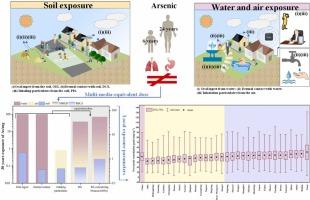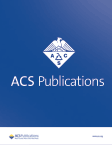利用多介质当量剂量和局部暴露参数得出砷污染场地修复目标的新见解
IF 2.9
Q2 PUBLIC, ENVIRONMENTAL & OCCUPATIONAL HEALTH
引用次数: 0
摘要
用传统方法计算得出的砷(As)修复目标(RG)约为 0.45 mg-kg-1,大大低于背景值。这给砷污染场地的管理带来了巨大挑战。本研究的重点是一个典型的玻璃厂场地,其砷污染水平高达 298 mg-kg-1,主要以 As (III) 的形式存在,致癌风险水平高达 8.6 × 10-5。我们开发了一种称为 "多介质当量剂量"(MMED)的新方法,其中纳入了当地的接触参数,并研究了特定地点的生物接触率(从 6.9% 到 51.5%)对结果的影响。通过 MMED 计算出的砷的 RG 值为 34.4 毫克-千克-1,而考虑生物可及性时为 54 毫克-千克-1。综合 31 个省的五个暴露参数,省级补救目标 (PRG) 介于 15.1 至 31.7 mg-kg-1 之间。使用新方法计算出的 RG 更符合砷污染场地管理的实际情况,有可能在各省更广泛地实施。本文章由计算机程序翻译,如有差异,请以英文原文为准。

Novel insight into deriving remediation goals of arsenic contaminated sites with multi-media-equivalent dose and local exposure parameters
The remediation goal (RG) for arsenic (As) calculated by the traditional method is approximately 0.45 mg·kg-1, significantly lower than the background values. This poses significant challenges for the management of As-contaminated sites. The present study focused on a typical glassworks site with an As contamination level of up to 298 mg·kg-1, predominantly existing as As (III), with a carcinogenic risk level as high as 8.6 × 10-5. We developed a novel method known as multi-media-equivalent dose (MMED), incorporating local exposure parameters, and investigated the impacts of site-specific bioaccessibility (from 6.9% to 51.5%) on the results. The RG of arsenic calculated via MMED was 34.4 mg·kg-1 and 54 mg·kg-1 when bioaccessibility was considered. Integrating with five exposure parameters across 31 provinces, the provincial remediation goals (PRGs) ranged from 15.1 to 31.7 mg·kg-1. The RG calculated using the new method were more aligned with the practical conditions of managing As-contaminated sites, with potential for broader implementation across various provinces.
求助全文
通过发布文献求助,成功后即可免费获取论文全文。
去求助
来源期刊

ACS Chemical Health & Safety
PUBLIC, ENVIRONMENTAL & OCCUPATIONAL HEALTH-
CiteScore
3.10
自引率
20.00%
发文量
63
期刊介绍:
The Journal of Chemical Health and Safety focuses on news, information, and ideas relating to issues and advances in chemical health and safety. The Journal of Chemical Health and Safety covers up-to-the minute, in-depth views of safety issues ranging from OSHA and EPA regulations to the safe handling of hazardous waste, from the latest innovations in effective chemical hygiene practices to the courts'' most recent rulings on safety-related lawsuits. The Journal of Chemical Health and Safety presents real-world information that health, safety and environmental professionals and others responsible for the safety of their workplaces can put to use right away, identifying potential and developing safety concerns before they do real harm.
 求助内容:
求助内容: 应助结果提醒方式:
应助结果提醒方式:


